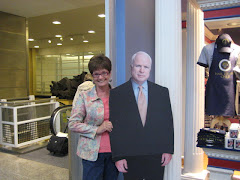With a Little Help From Its Friends
For years, governments have tried and failed to revive El Paso. Then local investors decided to take action.
By KRIS HUDSON
July 28, 2008; Page R3
EL PASO, Texas -- This border city, once the thriving commercial hub of the U.S. Southwest, is reviving its moribund downtown with the help of some native benefactors.
Still in its early stages, the effort to overhaul dormant hotels and office towers has delivered results already. Over the past two years, property values in a 288-acre section of downtown defined by a new tax-reinvestment district jumped 40% to almost $446 million. And many prominent El Paso structures that have stood empty for decades, including the Plaza Hotel, are being renovated.
This border city, once the thriving commercial hub of the U.S. Southwest, is reviving its moribund downtown with the help of some native benefactors. WSJ's Kris Hudson reports.
The difference between this and earlier revitalization efforts that fizzled is the involvement of deep-pocketed investors, who decided in 2004 to gather their own resources and chart a course for revival. Among them: longtime El Pasoan William Sanders, the founder of real-estate firms Security Capital Group Inc. and LaSalle Partners, and Paul Foster, chief executive officer of Western Refining Inc., an independent oil refiner and marketer based in El Paso.
"This is El Paso's shot to revitalize downtown," says Brent Harris, managing partner of Mr. Foster's real-estate interests. "With the folks that are involved in this, if it doesn't happen now, it's never going to happen."
El Paso, a city of 610,000 tucked into the far western corner of Texas between the borders of Mexico and New Mexico, was one of the first cities settled by Spanish explorers in what is now the U.S. El Paso established itself as the primary stop on the trail from the Mexican state of Chihuahua to Santa Fe, N.M., and later served on the all-weather route for travelers headed from the East Coast to California and back. In 1913, Texas established its college of mines -- now the University of Texas at El Paso -- in the city. For much of the last century, El Paso's major industries were cattle, cotton, textiles, copper refining and the neighboring Fort Bliss U.S. Army post.
El Paso began to lose momentum in the 1960s and 1970s. City leaders point to myriad causes. The spread of suburbanization after World War II produced greater growth in southwestern cities such as Phoenix, Ariz. El Paso lost big industries as the textile trade migrated to Asia and copper refineries and smelters shut down. As the city of Ciudad Juárez, directly across the border in Mexico, grew rapidly -- there are 2.6 million residents in the "borderplex" region of El Paso, Juárez and surrounding suburbs -- El Paso's economy became more intertwined with its neighbor's and subsequently suffered from the devaluation of the Mexican peso.
Hotels closed downtown, as did the Kress department store, leaving its iconic storefront vacant at a prominent street corner. Many floors in downtown buildings remain vacant with boarded-up windows, and department stores are mixed in with pawn shops and an outdoor swap meet.
Various levels of government have tried to boost El Paso's downtown, building a county courthouse in the 1980s, a state office building in the 1990s, a parking garage in recent years and a federal courthouse now under construction.
"For years, the city had tried redoing downtown on its own," says Verónica Rosales-Soto, redevelopment manager in the city's economic-development division. "But none of that mattered because the private investment didn't follow."
It wasn't until 2004 that private investors began gathering their resources to reverse the downtown's decline. Led by Mr. Sanders, the newly formed Paso Del Norte Group, a club of El Paso's business elite, hired a San Francisco-based consultant to help it draft a plan for overhauling downtown. The group brought in city officials to advise it on the plan's feasibility, but in a move that proved controversial, the business group elected not to subject the plan to widespread public scrutiny in its early phases, reasoning that too many opposing viewpoints might stymie the process.
DEEP POCKETS
• The Problem: El Paso's downtown was dying, and various government efforts to revive it had failed to take root.
• The Economic Game Plan: A group of local investors decided to gather their resources and chart a course for revival that included buying and overhauling dormant hotels and office towers.
• The Results So Far: Property values downtown have jumped 40% to almost $446 million over the past two years.By 2006, the plan was finalized. The Paso Del Norte Group unveiled it for an audience of 1,200 business owners, city officials and citizens at the historic Plaza Theatre downtown. The plan envisioned separate zones for an entertainment district, historic preservation, mixed-use development and a Mercado shopping district, among other things. In October 2006, the City Council adopted a revised version of the plan, which included changes such as removing a few blocks from the revitalization area to avoid disturbing adjacent neighborhoods. The council voted two months later to form a downtown tax-reinvestment district, where property-tax revenue in excess of 2006 amounts is used to help finance new city infrastructure, such as streets and sidewalks.
Mr. Sanders, who declined to comment for this article, formed the Borderplex Community Trust REIT in early 2007, specifically to buy and rehabilitate buildings in El Paso and Juárez. A REIT can pool its investors' money; buy and sell properties; and forgo paying corporate taxes as long as it pays out 90% of its income as dividends.
The REIT, with 216 investors so far, has purchased more than a dozen properties, investors say, including the O.T. Bassett Tower, a 15-story office building erected in 1930, and the 18-story Chase Bank Building, where occupancy has risen to 93% from 43% over the past 17 months.
The REIT intends to sell most of the O.T. Bassett Tower to apartment developer TVO Groupe and retain the first floor to convert to retail space. TVO will begin converting the tower to 30 luxury condominiums later this year. The El Paso-based developer anticipates the project will yield less than half of the 20% return it typically seeks in its investments, but it is willing to accept that to support the broader revitalization push, Chief Executive Charles Garrett says.
Mr. Foster, meanwhile, purchased the 98-year-old, 12-story Mills office building in 2006 and the adjacent, six-story Centre building last year. He also bought the 294-room Plaza Hotel, built in 1929 but vacant for the past two decades, directly across the street from his two office buildings. Mr. Foster has begun a renovation and expansion of the office buildings and moved Western Refining's headquarters there. Plans for the hotel still are in flux, though eventually it will be reopened.
Developments elsewhere in El Paso have added momentum to the downtown revitalization. Texas Tech University has begun construction of a medical campus in El Paso. The U.S. Army's realignment of its domestic and foreign forces stands to nearly double the size of Fort Bliss to almost 37,000 soldiers within the next five years.
MAN WITH A PLAN El Paso attorney James Scherr is renovating the International Hotel (in background).
But even with the rise in property values, not everyone supports the revitalization unequivocally. Some business and property owners object to the Paso Del Norte Group devising the plan privately before unveiling the final version. Their biggest fear is that the city will use eminent domain to seize properties and turn them over to developers if multiblock projects such as shopping centers are proposed.
"To have the city being manipulated by developers into scaring people out of their property is an un-American process," says Enoch Kimmelman, whose family has operated the Starr Western Wear store since 1964 and owns the store's 40,000-square-foot building.
Mayor John Cook denies that developers are steering the city government. A two-year moratorium on the use of eminent domain downtown is set to expire in November, but Mr. Cook says, "I don't really see that the city is going to have to use" it.
Meanwhile, El Paso's problems extend well beyond the vacancies downtown, according to Tom Fullerton, a University of Texas at El Paso economics professor. He says below-average graduation rates in El Paso's public schools and community colleges remain the city's biggest problem, resulting in a loss of $1 billion in personal income annually. The city's median household income measures $33,103, well below the national median of $48,451.
Still, James Scherr, a native El Pasoan, is betting the renaissance downtown is the beginning of something bigger. The attorney bought the 38-year-old, 200-room International Hotel downtown out of foreclosure for $1 million in 2004. He is spending $20 million, including $5 million in city-provided incentives, to get it back in operation as a Doubletree hotel by the end of the year.
"El Paso is going into the 21st century with our running shoes on," he says. "Right now, this town is poised for takeoff."
--Mr. Hudson is a staff reporter in The Wall Street Journal's Dallas bureau.
Write to Kris Hudson at kris.hudson@wsj.com
Active Rain Real Estate Network
You can find great local El Paso, Texas real estate information on Localism.com Patti Olivas is a proud member of the ActiveRain Real Estate Network, a free online community to help real estate professionals grow their business.
Thursday, July 31, 2008
Tuesday, July 29, 2008
My latest buyers are very happy
My last couple of buyers have been very happy with the negations that I have been able to get for them.
Right now sellers are helping in alot of cases with buyers closing costs and on the last couple of closing I have had I have been able to negotiate anywhere from $1600-$3000 in help from the seller. In some cases there is a give and take meaning that to get that much help the buyers had to be willing to pay close to list price(as long as it was priced well from the beginning).
All in all it is a great time to buy in El Paso. There are alot of homes to choose from and sellers that are willing to help buyers get into the home easily.
Right now sellers are helping in alot of cases with buyers closing costs and on the last couple of closing I have had I have been able to negotiate anywhere from $1600-$3000 in help from the seller. In some cases there is a give and take meaning that to get that much help the buyers had to be willing to pay close to list price(as long as it was priced well from the beginning).
All in all it is a great time to buy in El Paso. There are alot of homes to choose from and sellers that are willing to help buyers get into the home easily.
Monday, July 14, 2008
What a great market we are having
I bet you don't hear that too often in today's markets! What is a short sale? We just don't have them here in El Paso.
El Paso has a great market right now, even with alot of homes on the market and some seller's giving concessions to the buyers, we are not seeing home prices dropping.
June was a great month and we are expecting July to be even better.
Our foreclosure rate is down almost 50% and that is due to the fact that most sellers can sell their home before they get into trouble.
We are the 21st largest city in the nation and the 2nd or 3rd safest year after year.
Ft Bliss is growing by leaps and bounds (almost 96,000 new troops and family members by 2013) and they are enlarging the base by 3 times what it is right now.
There is a new medical school and border research center opening next year that is the first one on a border ever and a new Children's Hospital has been approved.
What else can I say? IT IS A GREAT TIME TO BUY A HOME IN EL PASO, TEXAS
El Paso has a great market right now, even with alot of homes on the market and some seller's giving concessions to the buyers, we are not seeing home prices dropping.
June was a great month and we are expecting July to be even better.
Our foreclosure rate is down almost 50% and that is due to the fact that most sellers can sell their home before they get into trouble.
We are the 21st largest city in the nation and the 2nd or 3rd safest year after year.
Ft Bliss is growing by leaps and bounds (almost 96,000 new troops and family members by 2013) and they are enlarging the base by 3 times what it is right now.
There is a new medical school and border research center opening next year that is the first one on a border ever and a new Children's Hospital has been approved.
What else can I say? IT IS A GREAT TIME TO BUY A HOME IN EL PASO, TEXAS
Subscribe to:
Posts (Atom)









